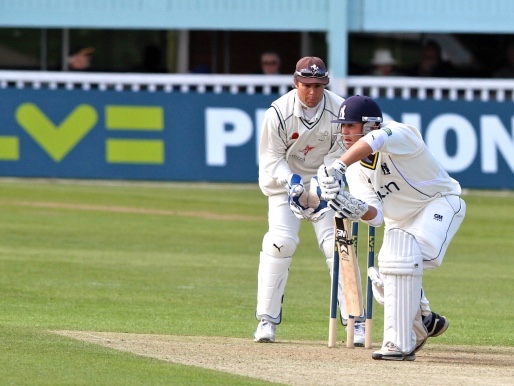How to Play Spin with Skill and Confidence
 Do you struggle with an effective way to bat against spin?
Do you struggle with an effective way to bat against spin?
There’s hope because - despite it’s difficulty - there have never been more options. Once you find an approach that works for you, your fear of spin vanishes forever.
Having a good method against spin also stands you out in a world where most batsmen prefer the ball coming onto the bat. Far fewer run makers are confident against the spinning ball. So, if you want to be a cricketer, your spin game better be A+.
Here’s how to get there.
The basics of playing spin
Aside from long hops, most coaches will advise you to play spin with a straight bat: A basic tip but one that takes more mastery that you first think.
You see, despite “playing straight” being low risk, high reward against spin there is more than one way to do it.
Start with the aim to hit the ball hard on the downswing, not the follow through. There are many different ways to do this. Different batsmen make contact at different moments, with different strides and with a different dominant hand. However, as long as the ball is hit on the downswing, it doesn’t matter how you do it.
The other key point is to hit it hard. This can be done through bat speed, brute force or subtle timing - depending on your skill set - but whatever your method you need to generate pace on the ball and get it through the gaps along the ground.
For many, this means losing “shape” and not hitting on the downswing. As long as you can keep the ball on the ground when you middle it, you are making the right shapes.
Let’s assume you can do this well (and if you can’t, you can stop reading now to go and work on it until it’s reliable).
The next step is the angle you hit the ball.
Hitting with the spin and into the spin
You have two options:
- With the spin
- Into the spin
What’s the difference?
When you play with the spin, you use the movement of the ball. For the ball turning in, you look to score between midwicket and mid off. For the ball turning away, your target area is between cover and straight mid on.
This is the traditional advice.
However, many players have also had great success playing into the spin.
When you hit into the spin, you let the ball turn on to the face of the bat and hit the ball with the full face back where it spun from.
The ball turning in spins towards you from the off side, so look to drive back into the off side. The more it turns, the wider you can drive with low risk. The ball turning away from you can be easily hit through midwicket if it pitches on leg stump and turns onto your bat. Sachin played this latter shot pretty well, so I reckon it’s not very high risk!
You might decide you prefer one option over the other, and that’s fine if it works for you.
That said, I would urge you to experiment with both methods as they can both be pretty handy tools and the risk is low both ways.
At club and school level, this approach may be enough by itself to get you plenty of runs. A non-professional spinner will give you plenty of bad balls to put away through drives, cuts and pulls.
But what happens when you are looking to push on more quickly than the spinner allows you?
Here, your options open up further. Let’s take a look.
Change the line and length
If you are good at timing the ball with drives, but the bowler is not giving you enough to drive, you can force a ball to drive yourself.
Use your feet.
The magic here is to get right to the pitch of the ball going forward, or as far as possible from the pitch when going back.
Coming down the wicket is slightly riskier than staying in your crease because if you miss it you can be stumped, but because you are still playing straight you can pick up runs in your chosen scoring area.
As long as you move with confidence, and still aim to hit on the downswing, you can be effective.
Some batters like to go early and slower, other prefer to go later and move more quickly. Both methods have pros and cons so try them out in nets to see what works for you. Remember, the objective is to get right to the pitch of the ball.
Either way, moving your feet is not licence to swing from the laces. Your first job is to hit the ball into a gap along the ground. If you can’t do that, be condfident in defence.
The classic image of a batsman using their feet to a spinner is coming down the pitch to turn a length ball into a half volley. This is great, but you can also change the length by going right back in your crease.
Dravid was a master of springing back to leg stump and hitting with the spin into the off side for easy runs. Work on getting right back to length balls as well. It’s the safest way to attack from the back foot.
In part two, we will examine manipulating the ball into gaps and going over the top. Get the newsletter to stay up to date.
- Login to post comments

